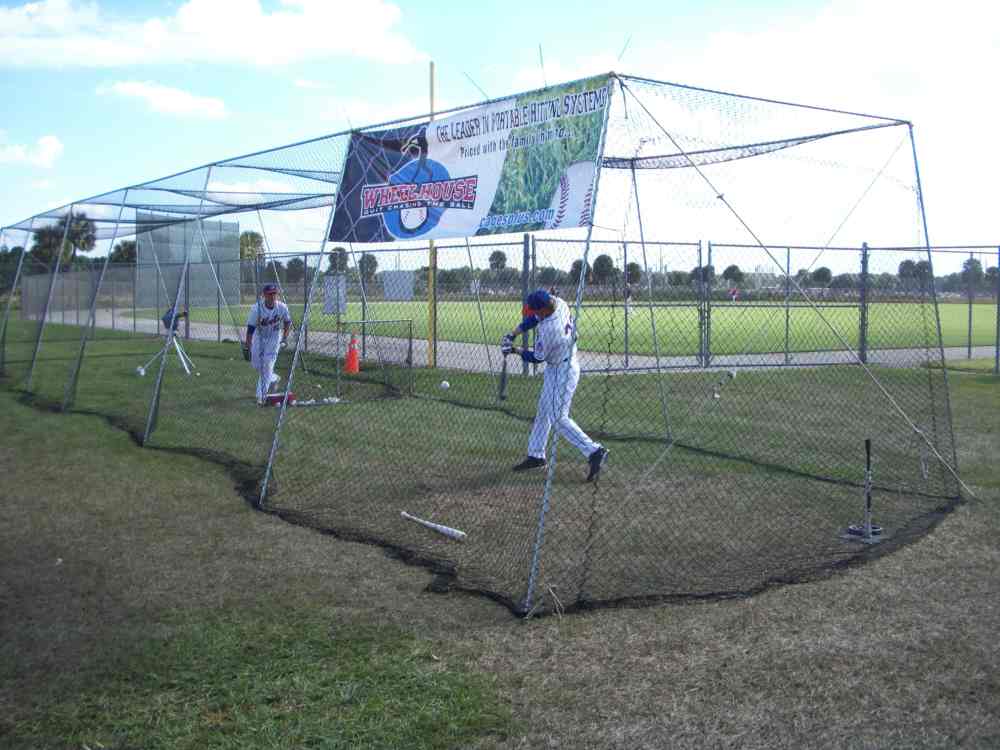
There are those who claim that the only method for improving a hitter’s timing is to pitch live balls from a live pitcher in live batting practice.
While simulating game conditions as much as possible has its advantages – just as a live concert helps to mold and shape a young orchestral musician – there are some things best worked on in the practice area, as most any athlete or musician would attest.
First, cages are advantageous to ballplayers because they allow for several “bites at the apple” without chasing all over the field shagging balls or running out grounders. Particularly with cages that use pitching machines, batters can stand in the box for as long as they like, taking cut after cut at either the same pitch, or an unpredictable series of them.
This allows batters to work on certain mechanics that might otherwise have to take a back seat during live practice conditions. It would be all but impossible to drill on one specific technique while others are waiting to take their allotted swings and/or while the manager wants to combine base-running and batting practices.
And, again, as any musician will tell you, the best way to make something perfect is to practice it, properly, over and over again, until the muscles know instinctively how to perform without the brain needing to become overly involved.
Also, just because you may choose to train in a cage doesn’t mean that all live methods have to go by the wayside. Short toss drills, for instance, where a pitcher throws to a batter from 10 or 15 feet away (behind a protective screen, of course) can still be run. These drills can assist in helping a pitcher place the ball in just the spot where the hitter might be having a problem.
Batting cages are excellent places to take advantage of the motivating factors of games. Even professional players revel in seeing who can hit the most targets, especially when the placement of those targets helps hitters improve where they are placing the batted ball on the diamond. Going up the middle too much? Move the targets to the sides of the cage, secure in the knowledge that any batted ball won’t stray beyond the cage’s boundaries.
And while one half of the squad works on target practice, the other half can take advantage of the benefits of live drills – all without either activity intruding upon the other.




Leave a comment
All comments are moderated before being published.
This site is protected by hCaptcha and the hCaptcha Privacy Policy and Terms of Service apply.